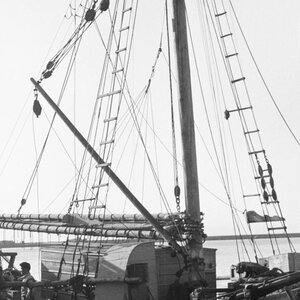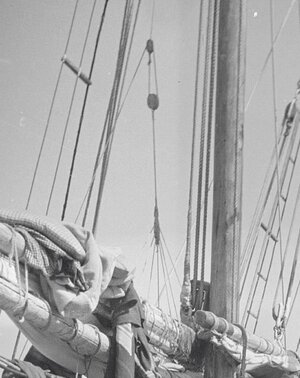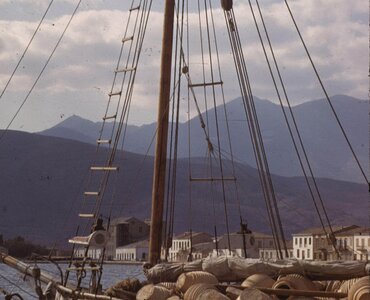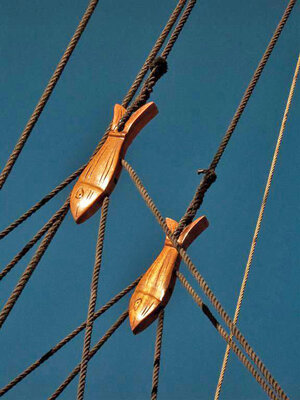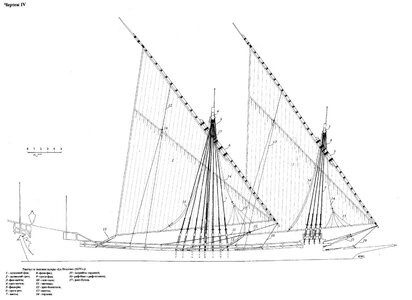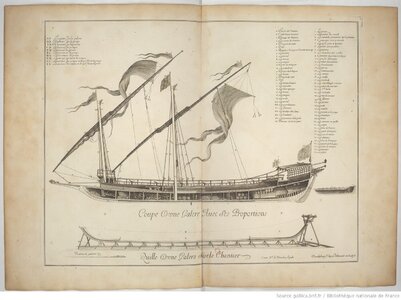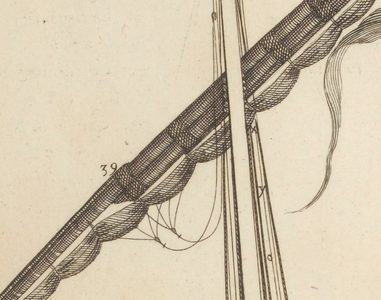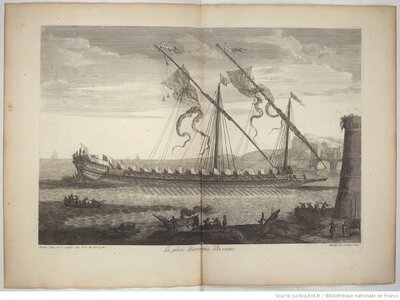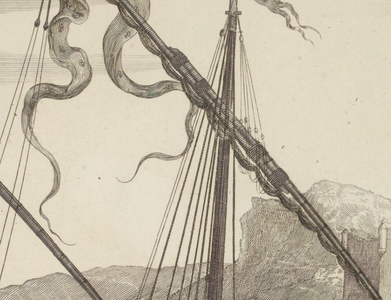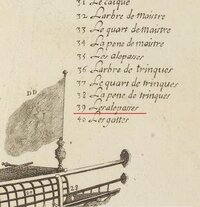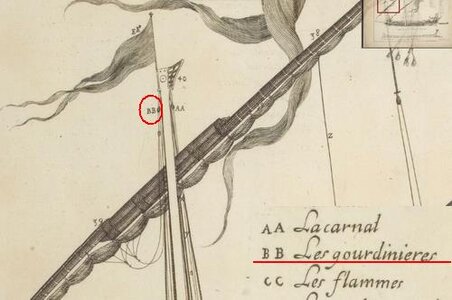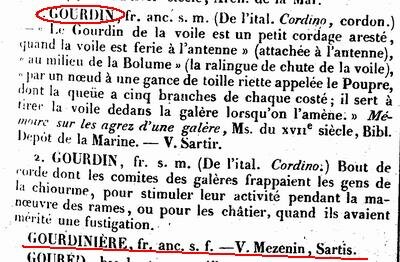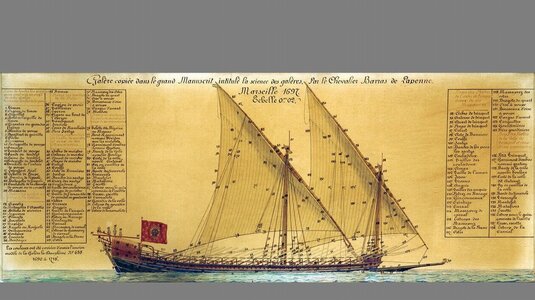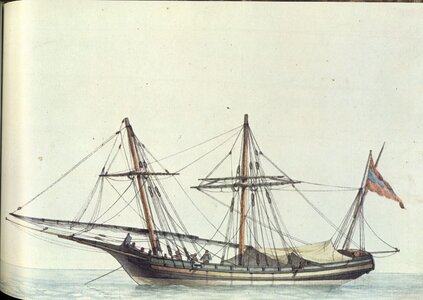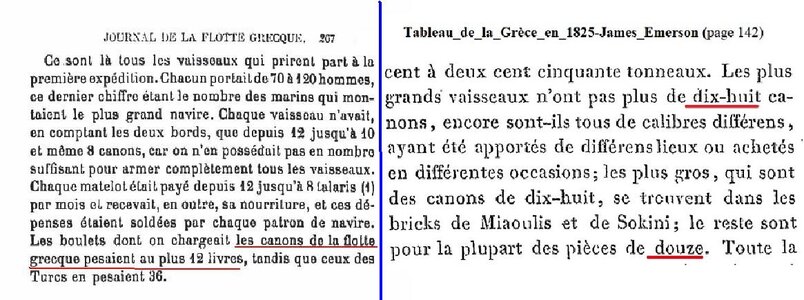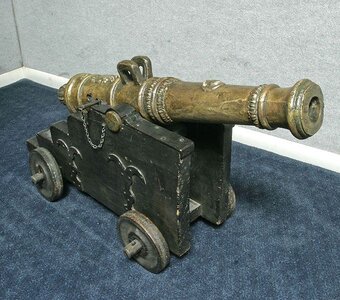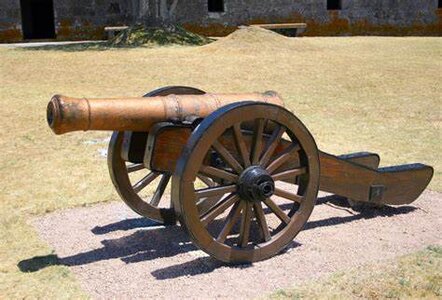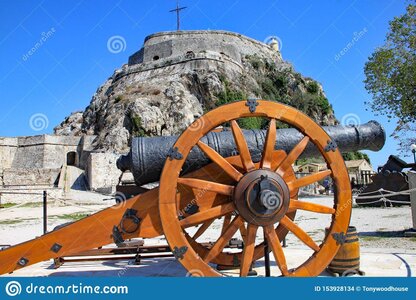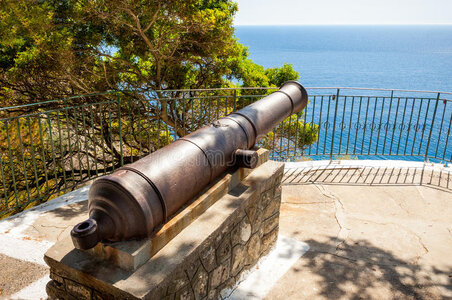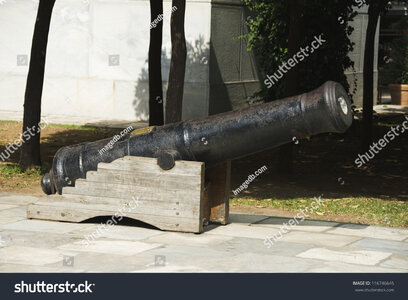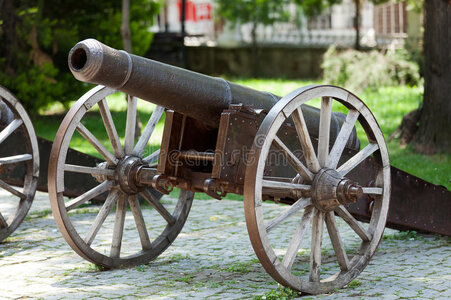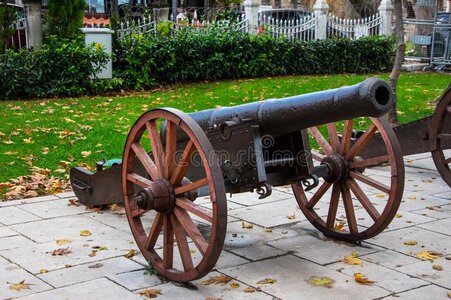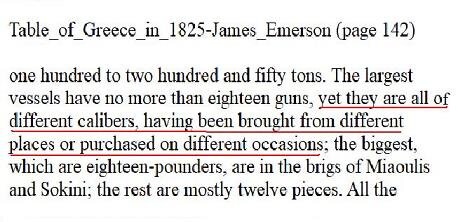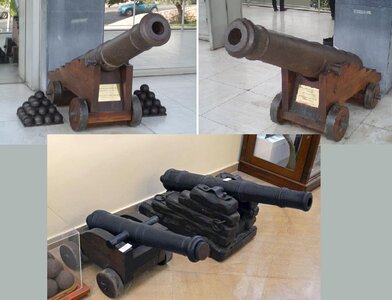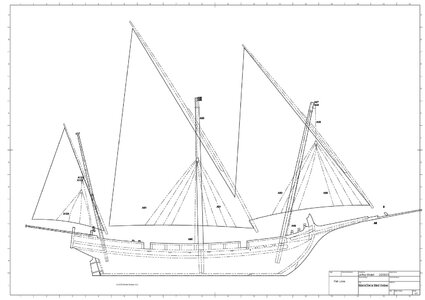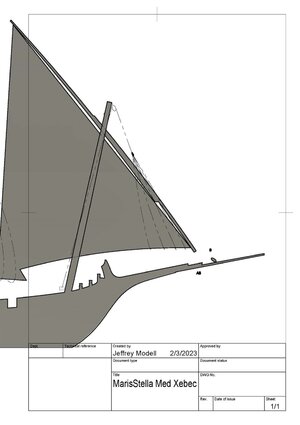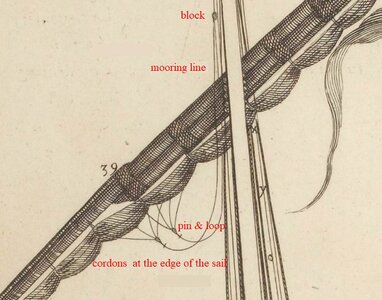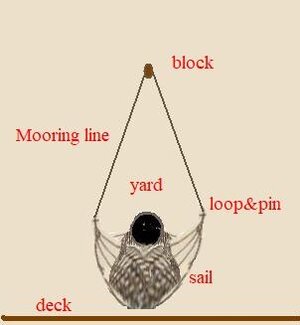Hi. Too many queries…I had to sharpen my faiding English.

Firstly, I didn’t say that, what was being used for Gr traditional vessels was the same system but a “similar” one…But if on the painting ignore the one part of the system, what is left - shown is the same one with what I suggest.
In this, let’s say Gr system, the lines under the “fish” are permanently attached on the boom on a gaff rigged vessel and the line above the fish is attached on the mast by a hauling system. See the photos, the clearest I could find from my collection.
Usually that system had-has one part of "guidelines", because the sail was being lowered inside the vessel and the crew could handle and fasten the folded sail from one side of the boom wile the sail was kept from the other side by the "guidelines".
I must say that in a gaff rigged large vessel definitely must be two of those systems (two "fishes"), because as you can imagine it’s impossible to be one “fish” over the peak having "guidelines" down to the boom.
Those two “fishes” in the blue colored photo, apart from their use, are also a decorative note in a recent small vessel and without the need of the second one. It was not always a wooden carved fish but just a wooden oval shaped part, with holes letting the lines adjust back and forth, as you said
In the painting we see one “fish” with two sets of "guidelines", and I think it wouldn’t impact the sail because it’s attached by the end of the sail, in a small triangular area and being loose. See the length of the "guidelines", which I think they would be a bit longer from the distance of the sail area where they worked in order not to effect the sail when the yard was in position-up.
As I see it would be only a small triangular area of the sail, freely fold and unfold between the space that is given by the “fish” and the length of the "guidelines".
As about any bibliography, there is only a reliable book with the title: “The Greek Traditional shipbuilding” which is referring on the Gr traditional vessels of around 1900 and it gives only hull plans and is written in Gr language.
You can see its first digitalized form of it and in English language, in two parts in below link:
https://research-repository.st-andrews.ac.uk/handle/10023/7116?show=full
The explanation of the drawing is in Russian language and I’m sorry but I don’t think there is any plan- you could find, of Greek polacre.
Thx
